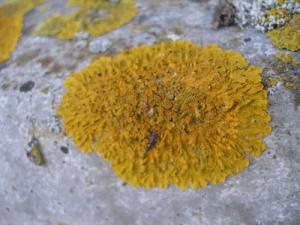Science
Exhumed rocks reveal Mars water ran deep

The large 25 km-diameter crater in the foreground of this High Resolution Stereo Camera (HRSC) perspective view has excavated rocks which have been altered by groundwater in the crust before the impact occurred.
- Read more
- 499 reads
Detailed Characterization of Shackleton Crater

a, Topography in km; b, percentage of time illuminated; c, 10-m baseline slopes in degrees; d, surface roughness shown as RMS residual in m; e, locations of crater counts used to determine relative ages; and f, zero-phase, 1,064-nm reflectance shown as I/F. Topography, slopes and roughness are based on a 10-m spatial resolution grid of all available LOLA profiles. In a–d and f, x and y axes indicate spatial scale, where (0, 0) is the lunar south pole and colour scales show magnitude of plotted quantity.
- Read more
- 450 reads
International space weather agreement

Image of the Sun taken from SOHO spacecraft
(Credit: ESA/NASA)
- Read more
- 456 reads
NASA's Hubble Spots Rare Gravitational Arc from Distant, Hefty Galaxy Cluster

Seeing is believing, except when you don't believe what you see.Astronomers using NASA's Hubble Space Telescope have found a puzzling arc of light behind an extremely massive cluster of galaxies residing 10 billion light-years away. The galactic grouping, discovered by NASA's Spitzer Space Telescope, was observed when the universe was roughly a quarter of its current age of 13.7 billion years.
- Read more
- 454 reads
Cassini Shows Why Jet Streams Cross-Cut Saturn

Scientists studying images from NASA's Cassini spacecraft have found that heat from within the planet powers the jet streams.
- Read more
- 640 reads
The toughest life on Earth

Lichen is an example that was exposed to space conditions on the International Space Station for 18 months. Some lichens survived the ordeal and continued to grow in the laboratory. Several trays filled with organisms were installed on the outside of the European Columbus laboratory.
- Read more
- 649 reads
Astronomers Discover Planetary Odd Couple

Planetrise: An artist's conception shows Kepler-36c as it might look from the surface of neighboring Kepler-36b.
- Read more
- 467 reads
NASA Spacecraft Reveals Ice Content in Moon Crater

NLSI scientists have mapped Shackleton crater with unprecedented detail, finding possible evidence for small amounts of ice on the crater’s floor. Using a laser altimeter on the Lunar Reconnaissance Orbiter (LRO) spacecraft, the team essentially illuminated the crater’s interior with laser light, measuring its albedo, or natural reflectance. The scientists found that the crater’s floor is in fact brighter than that of other nearby craters — an observation consistent with the presence of ice, which the team calculates may make up 22 percent of the material within a micron-thick layer on the crater’s floor.
- Read more
- 475 reads
Computer Graphics Group Selects NASA Earth Visuals for Showcase

An annual conference that presents and publishes the best in computer graphics and technical research chose a NASA excerpt as one of its select entries of 2012.
- Read more
- 486 reads
Human Rights
Fostering a More Humane World: The 28th Eurasian Economic Summi

Conscience, Hope, and Action: Keys to Global Peace and Sustainability

Ringing FOWPAL’s Peace Bell for the World:Nobel Peace Prize Laureates’ Visions and Actions

Protecting the World’s Cultural Diversity for a Sustainable Future

Puppet Show I International Friendship Day 2020


